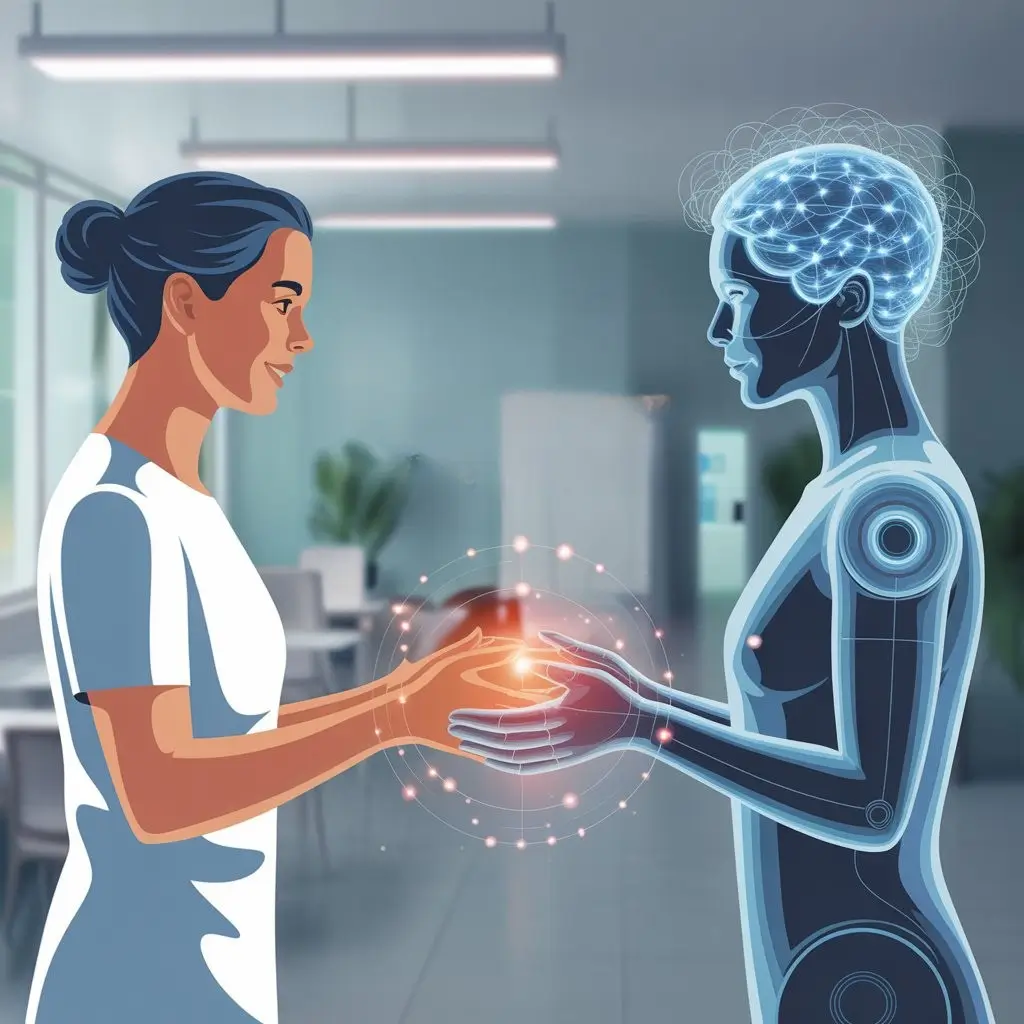Index
Introduction
- Overview of the Moon and Humanity
Chapter One: The Moon in Astronomy and Physics
- Lunar Formation: A Cosmic Collision
- Lunar Composition and Structure
- Lunar Orbit and Phases
- Gravitational Pull and Tides
- Spring Tides and Neap Tides
- Eclipses and Lunar Phenomena
- Other Lunar Phenomena: Blue Moon and Supermoon
- The Moon in Ancient Myths and Beliefs
Chapter Two: The Moon and Humanity Throughout History
- Ancient Civilizations and Lunar Calendars
- The Moon in Mythology and Religion
- Lunar Influence on Agriculture and Tides
- The Moon in Folklore and Proverbs
- The Moon in Modern Culture and Media
- The Moon in Art and Literature
Chapter Three: Biological and Physiological Effects
- Lunar Cycles and Human Biology
- The Menstrual Cycle and Lunar Phases
- Sleep Patterns and Lunar Influence
- The Moon’s Influence on Marine and Terrestrial Animals
- The Moon and Plants: Lunar Gardening
- The Moon and Sleep-Wake Cycles
- The Moon and the Nervous System
- The Moon and Mood and Emotions
Chapter Four: The Moon and Mental Health and Mood
- Lunar Cycles and Psychological Well-being
- The Full Moon Effect: Myth or Reality?
- The Moon, Dreams, and Creativity
- The Placebo Effect and Cultural Beliefs
- Harnessing Lunar Rhythms for Mental Well-being
- The Moon and Artistic Inspiration
Chapter Five: The Moon and Spiritual Practices and Consciousness
- Lunar Deities and Feminine Energy
- Moon Rituals and Meditation: Connecting with Lunar Energy
- The Moon and Astrology and Esoteric Traditions
- The Moon and Meditation and Mindfulness
- The Moon as a Spiritual Guide: A Journey of Self-Discovery
- The Moon and Healing: Lunar Energy for Well-being
Chapter Six: The Future of the Human-Moon Relationship
- Lunar Exploration and Scientific Discovery
- Lunar Exploration and the Future of Humanity
- Challenges and Opportunities in Lunar Exploration
- Lunar Space Tourism and Its Impact on Human Consciousness
- Lunar Colonization: Ethical and Legal Challenges
Conclusion
- The Moon: Our Eternal Companion in the Journey of Existence
Introduction
The moon, our celestial companion, has captivated humanity since the dawn of time. Its ethereal glow in the night sky has inspired poets, guided navigators, and shaped cultures across civilizations. More than just a distant orb, the moon is an integral part of our planet’s ecosystem, influencing tides, biological rhythms, and even human behavior in subtle yet profound ways.
This book embarks on a comprehensive exploration of the moon’s multifaceted relationship with humanity. We will delve into its astronomical and physical properties, tracing its origins and understanding its gravitational pull on Earth. We will journey through history, examining how ancient civilizations revered and interpreted the moon, and how its cycles influenced their calendars, agriculture, and spiritual practices.
Beyond the historical and scientific, we will explore the more subtle and often debated influences of the moon on human biology and psychology. From sleep patterns to mood fluctuations, we will examine the scientific evidence and anecdotal observations that suggest a deeper connection between our inner world and the lunar phases. We will also explore the moon’s role in spiritual practices, meditation, and the pursuit of self-awareness, recognizing its power as a symbol of transformation and renewal.
As we look to the future, we will consider the evolving relationship between humanity and its closest celestial neighbor. With renewed interest in lunar exploration and the prospect of lunar colonization, the moon is poised to play an even more significant role in our collective destiny. This book aims to provide a holistic understanding of the moon’s enduring presence in our lives, inviting readers to reconnect with its ancient wisdom and embrace its profound influence on our journey through time and consciousness.
The Moon as a Mirror of the Soul
The moon, with its ever-changing phases, serves as a powerful metaphor for the human soul. Just as the moon waxes and wanes, so too do our emotions, our energy levels, and our inner landscapes. Understanding and embracing these natural cycles, both within ourselves and in the cosmos, can lead to a deeper sense of harmony and well-being. The moon invites us to reflect on our own cyclical nature, to honor our periods of growth and introspection, and to find beauty in every phase of our existence.
The Moon as a Symbol of Time and Change
From ancient calendars to modern horoscopes, the moon has always been intertwined with our perception of time and change. Its consistent yet ever-shifting presence in the night sky reminds us of the ephemeral nature of life and the constant flow of transformation. By observing the lunar cycles, we can gain a deeper appreciation for the rhythms of nature and learn to navigate the ebb and flow of our own lives with greater grace and resilience.
The Moon as a Symbol of Unity and Connection
Across cultures and continents, the moon has served as a universal symbol, connecting humanity through shared wonder and reverence. Regardless of our backgrounds or beliefs, we all gaze upon the same moon, a silent witness to our collective history and a beacon of hope for our shared future. The moon reminds us that despite our differences, we are all part of a larger cosmic dance, interconnected and interdependent.
Chapter One: The Moon in Astronomy and Physics
The moon, Earth’s only natural satellite, is a celestial body of immense scientific interest. Its formation, composition, and gravitational influence have played a crucial role in shaping our planet and enabling the conditions for life.
Lunar Formation: A Cosmic Collision
The prevailing scientific theory for the moon’s formation is the
The Giant Impact Hypothesis posits that the moon formed from the debris of a colossal collision between early Earth and a Mars-sized protoplanet named Theia, approximately 4.5 billion years ago. This cataclysmic event ejected a significant amount of material into orbit around Earth, which then coalesced under gravity to form the moon.
Lunar Composition and Structure
The moon is a differentiated body, meaning it has a distinct crust, mantle, and core. The crust is primarily composed of anorthosite, a light-colored igneous rock, while the mantle is thought to be made of olivine and pyroxene. The moon’s core is small, partially molten, and rich in iron. Unlike Earth, the moon lacks a significant atmosphere or liquid water on its surface, making it a barren and airless world.
Lunar Orbit and Phases
The moon orbits Earth in an elliptical path, taking approximately 27.3 days to complete one revolution. As it orbits, the amount of sunlight reflected from its surface that is visible from Earth changes, leading to the familiar lunar phases: New Moon, Waxing Crescent, First Quarter, Waxing Gibbous, Full Moon, Waning Gibbous, Last Quarter, and Waning Crescent. These phases are a result of the changing angles between the Sun, Earth, and Moon.
Gravitational Pull and Tides
One of the most evident influences of the moon on Earth is its gravitational pull, which is responsible for the tides in our oceans. The moon’s gravity exerts a stronger pull on the side of Earth closest to it, causing the water to bulge outwards. A similar bulge occurs on the opposite side of Earth due to inertial forces. This creates two high tides and two low tides approximately every 24 hours and 50 minutes.
Spring Tides and Neap Tides
The magnitude of the tides varies depending on the alignment of the Sun, Earth, and Moon. When the Sun, Earth, and Moon are aligned (during New Moon and Full Moon phases), their gravitational forces combine, resulting in exceptionally high tides (spring tides) and exceptionally low tides. When the Sun and Moon are at right angles
to each other relative to Earth (during First Quarter and Last Quarter phases), their gravitational forces partially cancel each other out, leading to weaker tides (neap tides).
Lunar Formation: A Story of Origin
The Giant Impact Hypothesis is supported by various lines of evidence, including the moon’s lower density compared to Earth, the similarity in isotopic composition between lunar and Earth rocks, and the absence of volatile elements on the moon. This theory suggests that the moon is essentially a piece of Earth that was ejected into space and then re-formed.
Eclipses and Lunar Phenomena
Lunar and solar eclipses are dramatic celestial events that occur due to the precise alignment of the Sun, Earth, and Moon. A solar eclipse happens when the Moon passes between the Sun and Earth, casting a shadow on Earth. A lunar eclipse occurs when Earth passes between the Sun and the Moon, casting a shadow on the Moon. These events have fascinated humanity for millennia and have often been interpreted as omens or divine signs.
Other Lunar Phenomena: Blue Moon and Supermoon
Beyond the regular phases and eclipses, the moon presents other intriguing phenomena. A
Blue Moon refers to the second full moon in a single calendar month, a relatively rare occurrence. A Supermoon occurs when a full moon or new moon coincides with the moon’s closest approach to Earth, making it appear larger and brighter than usual.
The Moon in Ancient Myths and Beliefs
Across diverse cultures, the moon has been a central figure in myths, legends, and religious beliefs. From ancient Mesopotamian deities to Greek goddesses, the moon has been personified as a powerful entity influencing human destiny, fertility, and the natural world. These myths often reflected the moon’s observable cycles and its perceived impact on life on Earth.
Chapter Two: The Moon and Humanity Throughout History
Throughout history, the moon has been a constant presence in human civilization, shaping our calendars, inspiring our art, and influencing our understanding of the cosmos.
Ancient Civilizations and Lunar Calendars
Many ancient civilizations, including the Babylonians, Egyptians, and Mayans, developed sophisticated lunar calendars to track time, predict agricultural cycles, and schedule religious ceremonies. The moon’s predictable phases provided a reliable means of organizing daily life and understanding the passage of seasons.
The Moon in Mythology and Religion
The moon has been revered as a deity or a sacred symbol in countless mythologies and religions. In ancient Greece, Artemis was the goddess of the moon, hunting, and childbirth. In Roman mythology, Luna was the divine personification of the moon. These lunar deities often embodied qualities associated with the moon, such as mystery, intuition, and feminine power.
Lunar Influence on Agriculture and Tides
Farmers throughout history have observed the moon’s influence on agricultural practices, believing that certain lunar phases are more favorable for planting, harvesting, or pruning. While scientific evidence for these claims is often debated, the moon’s undeniable impact on tides has always been a crucial factor for coastal communities and maritime activities.
The Moon in Folklore and Proverbs
The moon has permeated folklore and proverbs across cultures, reflecting its deep integration into human consciousness. Phrases like “once in a blue moon” signify rarity, while beliefs about the moon’s influence on madness (lunacy) or fertility persist in some traditions, highlighting the enduring power of lunar symbolism.
The Moon in Modern Culture and Media
In contemporary society, the moon continues to inspire and fascinate. It features prominently in literature, music, and film, often symbolizing romance, mystery, or transformation. From science fiction narratives about lunar colonization to popular songs celebrating its beauty, the moon remains a powerful cultural icon.
The Moon in Art and Literature
Artists and writers have long drawn inspiration from the moon, depicting its ethereal beauty and symbolic significance in their works. From classical paintings to modern poetry, the moon has served as a muse for countless creative expressions, reflecting humanity’s enduring fascination with its celestial companion.
Chapter Three: Biological and Physiological Effects
Beyond its gravitational pull, the moon has been theorized to exert subtle influences on biological and physiological processes in living organisms, including humans.
Lunar Cycles and Human Biology
Some studies suggest a correlation between lunar cycles and various human biological rhythms, such as sleep patterns, menstrual cycles, and even birth rates. While the mechanisms behind these potential connections are not fully understood, the idea of a lunar influence on our bodies has been a subject of scientific inquiry for centuries.
The Menstrual Cycle and Lunar Phases
The average length of the human menstrual cycle is approximately 28 days, which closely aligns with the moon’s synodic period (the time it takes for the moon to complete one cycle of phases, about 29.5 days). This alignment has led to speculation about a historical connection between lunar cycles and female reproductive health, though scientific evidence remains inconclusive.
Sleep Patterns and Lunar Influence
Some research indicates that sleep patterns may be subtly affected by lunar phases, with some individuals experiencing shorter sleep duration or altered sleep architecture during certain moon phases, particularly around the full moon. However, these findings are often debated and require further investigation.
The Moon’s Influence on Marine and Terrestrial Animals
The moon’s influence on marine life is well-documented, particularly its role in triggering spawning events in various marine species, such as corals and grunion. Some studies also suggest lunar influences on the behavior and physiology of terrestrial animals, including nocturnal activity patterns and reproductive cycles.
The Moon and Plants: Lunar Gardening
For centuries, farmers and gardeners have practiced.
Lunar gardening is the belief that planting and harvesting according to lunar phases can enhance crop yield and plant health. While scientific evidence for these practices is limited, the tradition persists in many agricultural communities.
The Moon and Sleep-Wake Cycles
Beyond general sleep patterns, some studies explore the moon’s potential influence on the human circadian rhythm, the internal biological clock that regulates sleep-wake cycles. While direct causal links are still being investigated, the subtle changes in ambient light during different moon phases might play a role in modulating these rhythms.
The Moon and the Nervous System
Some theories propose that the moon’s gravitational pull, though subtle, might affect the fluid balance within the human body, including cerebrospinal fluid, potentially influencing the nervous system. However, robust scientific evidence to support these claims is largely lacking, and they remain subjects of ongoing research and speculation.
The Moon and Mood and Emotions
The idea of the moon influencing human mood and emotions, particularly during the full moon, is a pervasive belief in many cultures. While scientific studies have largely failed to find a direct causal link between lunar phases and significant changes in mood or behavior, the psychological impact of cultural beliefs and expectations cannot be entirely dismissed.
Chapter Four: The Moon and Mental Health and Mood
The moon has long been associated with human emotions, mental states, and even madness. While many of these associations are rooted in folklore and anecdotal evidence, the psychological impact of the moon remains a fascinating area of exploration.
Lunar Cycles and Psychological Well-being
Some individuals report experiencing heightened emotions, increased anxiety, or sleep disturbances during certain lunar phases, particularly around the full moon. While scientific studies have yielded mixed results, the subjective experience of these individuals highlights the complex interplay between perception, belief, and physiological responses.
The Full Moon Effect: Myth or Reality?
The concept of a full moon effect, where the full moon is believed to trigger an increase in accidents, crime rates, or psychiatric admissions, is a popular but largely unsubstantiated belief. Scientific research has consistently failed to find a significant correlation between the full moon and these events.
The Moon, Dreams, and Creativity
The moon has often been associated with dreams, intuition, and creativity. Many artists, writers, and musicians have drawn inspiration from the moon, finding its ethereal beauty and symbolic significance to be a source of creative energy. The
The moon’s presence in the night sky can evoke a sense of wonder and introspection, potentially influencing the content and emotional tone of our dreams.
The Placebo Effect and Cultural Beliefs
The perceived influence of the moon on mental health and mood may be partly explained by the placebo effect and cultural beliefs. If individuals expect to feel a certain way during a particular moon phase, their expectations can influence their subjective experience, regardless of any direct physiological effect.
Harnessing Lunar Rhythms for Mental Well-being
Regardless of the scientific evidence, many individuals find value in aligning their personal practices with lunar rhythms. By paying attention to the moon’s phases, they can create a sense of structure and intention in their lives, using the new moon for setting goals, the full moon for celebrating achievements, and the waning moon for releasing what no longer serves them.
The Moon and Artistic Inspiration
The moon’s influence on artistic inspiration is undeniable. Its ever-changing appearance, from a sliver of a crescent to a radiant full orb, has provided a rich source of imagery and symbolism for artists throughout history. The moon’s association with romance, mystery, and the subconscious has made it a powerful muse for creative expression.
Chapter Five: The Moon and Spiritual Practices and Consciousness
Beyond its scientific and cultural significance, the moon holds a special place in many spiritual traditions, serving as a symbol of transformation, renewal, and the divine feminine.
Lunar Deities and Feminine Energy
In many cultures, the moon is associated with feminine energy, intuition, and the
cyclical nature of life. Lunar deities, such as the Greek goddess Artemis and the Roman
goddess Luna, embody these qualities and are often revered as protectors of women, childbirth, and the natural world.
Moon Rituals and Meditation: Connecting with Lunar Energy
Many spiritual practices involve moon rituals and meditations designed to connect with the moon’s energy and harness its transformative power. These rituals often coincide with specific moon phases, such as the new moon for setting intentions and the full moon for releasing negative energy.
The Moon and Astrology and Esoteric Traditions
In astrology and other esoteric traditions, the moon is considered a key celestial body that influences personality, emotions, and destiny. The moon’s position in a person’s birth chart is believed to reveal their inner emotional landscape and their relationship with their mother or feminine figures.
The Moon and Meditation and Mindfulness
The moon’s serene and constant presence in the night sky can be a powerful focal point for meditation and mindfulness practices. By observing the moon, we can cultivate a sense of calm, introspection, and connection to the natural world.
The Moon as a Spiritual Guide: A Journey of Self-Discovery
For many individuals, the moon serves as a spiritual guide, offering a sense of direction and purpose in their lives. By aligning their personal growth with the lunar cycles, they can embark on a journey of self-discovery, embracing the moon’s symbolism of transformation and renewal.
The Moon and Healing: Lunar Energy for Well-being
In some healing traditions, the moon is believed to possess a subtle energy that can be harnessed for physical, emotional, and spiritual well-being. Practices such as moon bathing (exposing oneself to moonlight) and charging crystals under the full moon
They are believed to promote healing and restore balance.
Chapter Six: The Future of the Human-Moon Relationship
As we enter a new era of space exploration, our relationship with the moon is poised to evolve in profound ways. From scientific research to potential colonization, the moon continues to captivate our imagination and shape our future.
Lunar Exploration and Scientific Discovery
Renewed interest in lunar exploration, with missions planned by various space agencies and private companies, promises to unlock new scientific discoveries about the moon’s formation, composition, and potential resources. These missions will not only expand our knowledge of our celestial neighbor but also pave the way for future human presence on the moon.
Lunar Exploration and the Future of Humanity
The prospect of lunar colonization raises profound questions about the future of humanity. Establishing a permanent human presence on the moon would not only be a remarkable technological achievement but also a significant step towards becoming a multi-planetary species. The moon could serve as a stepping stone for further exploration of the solar system and beyond.
Challenges and Opportunities in Lunar Exploration
Lunar exploration presents both significant challenges and exciting opportunities. The harsh lunar environment, with its extreme temperatures, lack of atmosphere, and cosmic radiation, poses significant risks to human health and technology. However, the moon also offers potential resources, such as water ice and helium-3, which could support future human settlements and fuel a new space economy.
Lunar Space Tourism and Its Impact on Human Consciousness
The development of lunar space tourism could have a profound impact on human consciousness. The experience of seeing Earth from the moon, a phenomenon known as the overview effect, has been described by astronauts as a life-changing experience that fosters a sense of global unity and environmental responsibility. Making this experience accessible to more people could have a transformative effect on our collective perspective.
Lunar Colonization: Ethical and Legal Challengesmore accessible to a wider audience could have a profoundly
The prospect of lunar colonization raises complex ethical and legal questions. Who owns the moon? How will lunar resources be managed? How will we ensure that lunar exploration is conducted in a responsible and sustainable manner? These are some of the critical issues that need to be addressed as we venture further into space.
Conclusion: The Moon: Our Eternal Companion in the Journey of Existence
The moon, our celestial companion, has been a constant presence in the human story, shaping our cultures, inspiring our art, and influencing our understanding of the cosmos. From its gravitational pull on our oceans to its subtle influence on our biological rhythms, the moon is an integral part of our planet’s ecosystem and our collective consciousness.
As we have explored in this book, the moon’s relationship with humanity is multifaceted and profound. It is a scientific object of immense interest, a cultural symbol of great power, and a spiritual guide for many. The moon reminds us of our connection to the natural world, the cyclical nature of life, and the vastness of the universe.
As we look to the future, our relationship with the moon is poised to evolve in exciting and transformative ways. With renewed interest in lunar exploration and the prospect of lunar colonization, the moon will continue to challenge our technological capabilities and expand our understanding of our place in the cosmos.
Ultimately, the moon is more than just a rock in the sky. It is a mirror of our own souls, a symbol of our shared humanity, and a beacon of hope for our collective future. By embracing the moon’s ancient wisdom and its profound influence on our lives, we can
embark on a journey of self-discovery, transformation, and connection to the universe.
A Call to Harmony: Living with the Rhythms of the Moon
This book is an invitation to reconnect with the rhythms of the moon and to embrace its transformative power in our lives. By paying attention to the lunar cycles, we can cultivate a deeper sense of harmony with ourselves, with nature, and with the cosmos. Let the moon be your guide as you navigate the ebb and flow of life, and may its gentle light illuminate your path to self-discovery and well-being.






























